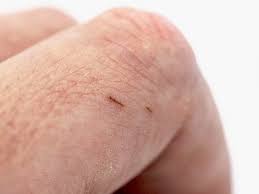
Fiberglass can be described as a synthetic or manufactured material made up of small fibers of glass. Fiberglass is used as insulation in many homes. Fiberglass can be introduced to the environment by using insulation manufacturing, packaging, and disposal. Fiberglass can cause skin irritations, pain, wheezing, skin irritation, itching, and irritation.
Fiberglass Exposure
Most likely, fiberglass exposure will occur at work. Fiberglass is used for insulation, walls, ceilings and ventilation ducts. Fiberglass materials can be damaged and release small particles into the atmosphere. These tiny particles look almost like dust. These tiny particles can be ingested, touched, or inhaled without our realizing.
Fiberglass is more dangerous for workers who are installing or fixing insulation. You may also be at risk if you work in the electronics, wind energy, or plastics industries.
It’s unlikely that Fiberglass is found in the insulation or other structures of your home. Fiberglass exposures are rare.
How to Limit Exposure
If you plan to work with home insulation, pipes or other fiberglass-containing materials, there are steps you can take to protect yourself:
- To improve air quality and ventilation, open a window.
- To prevent particles from getting in your eyes, nose, or mouth, wear a mask and goggles.
- To prevent skin contact with the particles, wear loose-fitting clothing with long sleeves. Wearing loose-fitting clothing will prevent skin irritation 2
- To prevent fiberglass particles from reaching your Skin, choose tightly woven clothing.
- While working 3, wear leather gloves with a smooth surface and steel-toed shoes.
- A head covering is helpful if you work with materials overhead like insulation.
- After you’re done working, vacuum the shop to remove any microscopic fibers
- Wash work clothes separately from any other clothing in the household. Rinse the washer when you’re done
There are federal regulations that can be used to reduce Exposure. The Occupational Safety and Health Administration (OSHA) established guidelines in 1999 to limit workers’ Exposure. The guidelines state that workers should not be exposed for more than eight hours to “one breathable fiber per cubic centimetre” 4. This is to ensure there is sufficient airflow to prevent inhalation.
How to remove Fiberglass from the Skin
Inspect your Skin after working with Fiberglass, or any home renovations. You may have been exposed to Fiberglass if you develop a red, itchy rash. These are the steps to follow:
- To prevent fiberglass particles from inhaling, you should first leave your workplace.
- Use mild soap and warm water to wash the area immediately. You can remove the Fiberglass as soon as possible to minimize irritation. Avoid using hot or warm water as this can cause your Skin’s pores to open and allow the Fiberglass to lodge deeper in the Skin.
- If fiberglass particles are larger than you can see, use a cold cloth to remove them or apply and remove the adhesive tape to your Skin.
- After cleaning the area, take your clothes off and wash them separately from another laundry.
- Do not scratch or rub any skin that is inflamed. This could spread the Fiberglass and cause further irritation 5
- You should flush your eyes with water for at most 15 minutes if you have concerns about fiberglass particles entering your eyes. You may also be able to get an eyewash solution from your employer 6
- Consult your healthcare provider if you experience persistent skin irritations and pains.
Fiberglass is dangerous
Fiberglass exposure is not dangerous. Symptoms should disappear once the Fiberglass has been removed. It is not known what long-term effects fiberglass exposure can have.
Skin irritation
Contact dermatitis is a condition where fiberglass particles can become embedded in the Skin. It can occur on any skin that has been exposed to Fiberglass. Contact dermatitis is a skin condition that results from contact with an irritant. It can cause skin irritation and skin peeling.
Other complications
Exposure to Fiberglass can cause respiratory problems. Fiberglass can be inhaled, and larger particles can become trapped in your lungs. Smaller particles can travel to the lungs and settle there. It can cause symptoms such as coughing, sneezing and itching. Fiberglass is often ingested into the gastrointestinal system. The bowels normally eliminate it. 1 You should consult your healthcare provider if you experience any of these symptoms.
Cancer Risk
Fiberglass can irritate but has not been associated with cancer. The National Academy of Sciences, Wisconsin State Department of Health reviewed studies that examined fiberglass exposure among workers in 2000. According to the Wisconsin State Department of Health, the National Academy of Sciences reviewed studies on fiberglass exposure in 2000.
One Word from Our Side
Fiberglass is a synthetic material that is made of tiny pieces. It can irritate if inhaled or touched. Fiberglass exposure is not considered life-threatening and can be easily removed from the Skin using simple methods. This problem can be prevented by wearing protective gear when doing fiberglass construction.
You should wash your Skin gently if exposed to Fiberglass at work. Contact your healthcare provider if you experience persistent skin irritations or pain for medical assistance.
Does Muscle Weigh More Than Fat?
November 13, 2025Explore How Long Does a UTI Last?
November 10, 2025
Leave a reply Cancel reply
You must be logged in to post a comment.
-
The Secret to Traveling Safely During a Pandemic
October 1, 2020 -
Sudden Stabbing Pain In Pelvic Area Female
October 3, 2023





